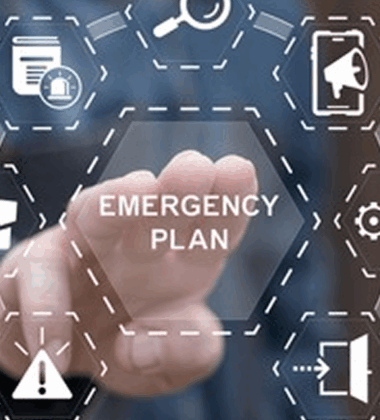Trade shows are often judged by the bustle at your booth, the buzz around your brand, and the volume of leads you collect—but those aren’t the metrics that define true success. What happens after the event, in the quieter days of follow-up and fulfillment, is where your biggest gains—or losses—will occur.
And yet, most brands overlook it entirely.
In today’s performance-driven marketing environment, brands are expected to justify every dollar spent, especially at large-scale events like the Food and Beverage Expo USA. That’s where understanding and optimizing your marketing ROI benchmarks becomes not only important—but essential.
Let’s explore how the post-expo phase holds untapped ROI potential, and how food and beverage brands can shift their strategy to fully capitalize on the long tail of expo investments.
The Real ROI Happens After the Booth Comes Down
Trade shows are expensive—exhibit space, travel, staffing, samples, booth design, promotional materials, and logistics add up fast. Despite this, many brands treat the event itself as the final stage of the funnel.
The truth is, the expo is only the midpoint. Leads are gathered, interest is sparked, and brand impressions are made—but the most critical touchpoints for conversion happen in the follow-up phase.
Why it matters:
- Most expo leads require 4–6 touchpoints before they convert
- Up to 80% of leads never receive personalized post-event outreach
- Brands that implement structured follow-up sequences see up to 35% higher lead-to-close rates
When you focus on post-event engagement, fulfillment, and messaging, you’re no longer throwing darts in the dark. You’re building a scalable system that improves your marketing ROI benchmarks over time.
Defining Post-Expo ROI: What Should You Be Measuring?
Many teams default to vanity metrics like booth traffic or social media buzz. While these are helpful indicators of reach, they rarely reflect conversion efficiency.
Here’s what you should track to understand your true marketing ROI from trade shows:
- Lead quality and source segmentation
Not all contacts are equal. Separate casual booth visitors from distributor meetings or press inquiries. - Sample-to-sale conversion rates
Did your free tastings lead to purchase orders or menu placements? - Average time to follow-up
The faster your team responds, the higher the conversion potential. - Follow-up email open and click-through rates
These engagement signals help identify which leads are most interested post-show. - Cost-per-qualified lead (CPQL)
Divide your total expo spend by the number of truly qualified, active leads. - Revenue attributed to the event (within 60/90/180 days)
A long-term view ensures you’re capturing downstream deals and repeat orders.
These metrics allow your team to compare performance across events and set internal marketing ROI benchmarks for future expos.
The Post-Event Fulfillment Funnel: A Strategic Breakdown
Think of post-expo follow-up as its own funnel—with stages that need attention, resources, and optimization. Here’s how it breaks down:
1. Lead Scoring and Segmentation
Immediately after the event, categorize your leads:
- Hot: ready for orders or press coverage
- Warm: interested but needs nurturing
- Cold: low engagement or vague interest
This prevents your sales and marketing teams from wasting time or sending generic messaging.
2. Personalized Follow-Up (Within 72 Hours)
Send tailored emails or messages based on:
- What product they tasted or asked about
- Any notes from your booth team
- Their role (buyer, distributor, media, chef, etc.)
A well-timed, specific message shows attentiveness and builds trust.
3. Sample Delivery and Product Kits
Physical product samples remain one of the highest-converting tools post-show. But to make them count:
- Package samples with story-driven inserts
- Include QR codes to videos, testimonials, or recipe ideas
- Track delivery and follow-up within a week
Delays or generic packaging can tank an otherwise hot lead.
4. Content Re-engagement
Use post-event content to stay top of mind:
- “Behind the scenes at our Food and Beverage Expo USA booth”
- “How we developed our flavor pairings for the show”
- “Expo favorites: Top recipes using our showcased products”
This nurtures interest and positions your brand as active, innovative, and relevant.
5. Sales or Distribution Follow-Up
After your first nurture cycle, pass leads to your sales or distribution team with full context. Track each touchpoint, outcome, and deal stage using a CRM system aligned with your ROI benchmarks.
Why Most Brands Miss This Opportunity
Even seasoned exhibitors tend to put their energy into pre-show logistics and in-booth engagement—understandably so. But this often comes at the expense of post-show planning, which tends to fall through the cracks.
Here are some common pitfalls:
- No CRM integration or lead tracking system on-site
- Lack of alignment between marketing and sales teams
- Failure to allocate post-show budgets (for shipping samples, email campaigns, etc.)
- One-size-fits-all emails with no personalization or segmentation
The result? A box of business cards, a few great memories, and no measurable growth.
Building a Post-Expo Playbook
To capture more value from your next event, create a standardized process for post-show follow-up. Your internal “playbook” should include:
- A booth lead capture system (tablet forms, badge scanners, lead notes)
- Lead scoring criteria
- Sample fulfillment templates and suppliers
- Email sequences for each type of lead
- KPIs mapped to your marketing ROI benchmarks
- Team assignments and a 30-day post-show timeline
This system can be reused and refined across future events—turning each expo into a repeatable revenue channel.
The Role of Operations and Logistics Teams
While sales and marketing often lead the conversation about trade show ROI, operations teams play a critical role in fulfillment efficiency. From getting samples delivered on time to managing inventory and shipping costs, logistics directly impacts your ROI.
For food and beverage brands at the Food and Beverage Expo USA, consider:
- Working with a 3PL partner to handle post-show shipments
- Using pre-printed, branded sample kits for quick turnaround
- Assigning one logistics lead to coordinate with sales and marketing
The smoother your backend processes, the faster you can capitalize on warm leads.
Setting Realistic ROI Benchmarks
What kind of return can you expect?
Here are industry averages to guide your internal benchmarking:
| Metric | Average | High-Performing Brands |
| Lead-to-sale conversion | 5–10% | 20–30% with strong follow-up |
| Time-to-close | 30–60 days | <30 days with personalized outreach |
| Revenue per 100 leads | $2,000–$5,000 | $10,000+ with targeted product demos |
| Cost-per-qualified-lead | $250–$500 | <$200 with segmentation and retargeting |
These numbers vary by product category, buyer persona, and pricing structure—but they offer a baseline to work from.
Final Thoughts: ROI Lives in the Follow-Up
At large expos like the Food and Beverage Expo USA, standing out is just the beginning. Sustaining momentum afterward is where the real growth begins.
When brands invest in a structured, personalized post-event strategy—rooted in data, fulfillment logistics, and marketing ROI benchmarks—they unlock a powerful, often overlooked revenue stream.
Don’t let your trade show leads grow cold in a spreadsheet. Build the system, staff the strategy, and commit to follow-through. Because the expo floor may close in three days—but the opportunity window stays open for months.





